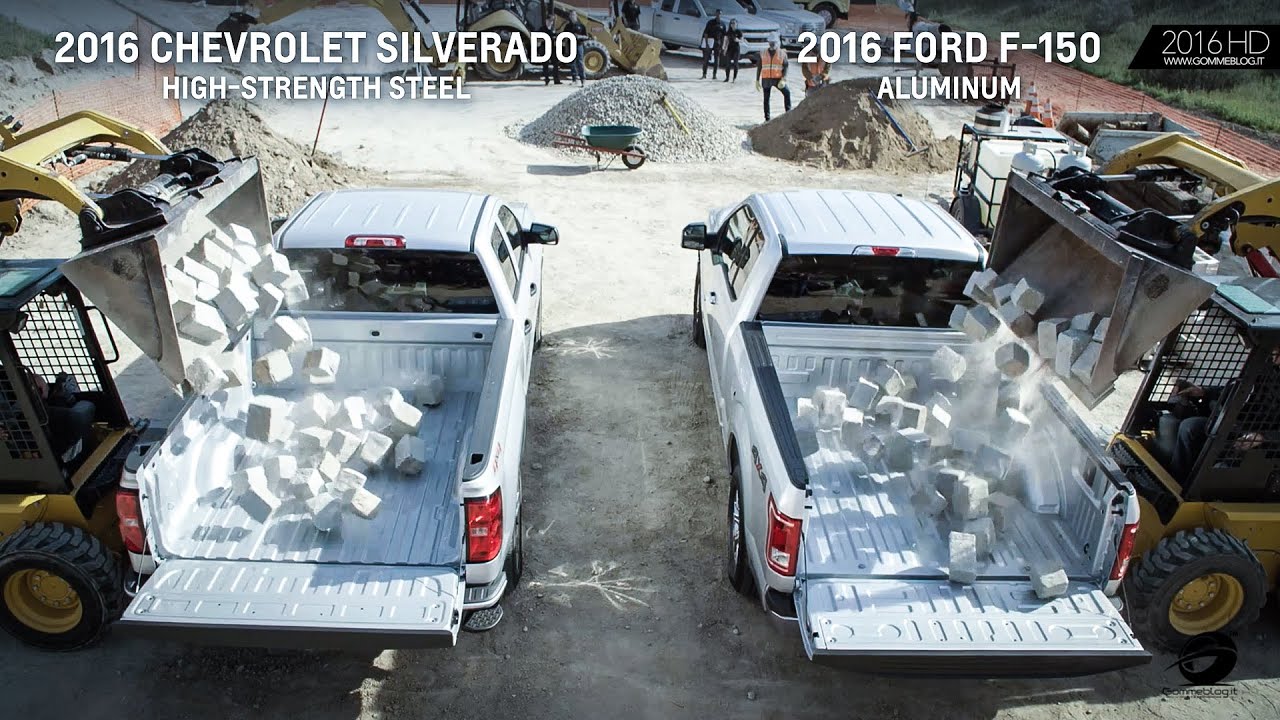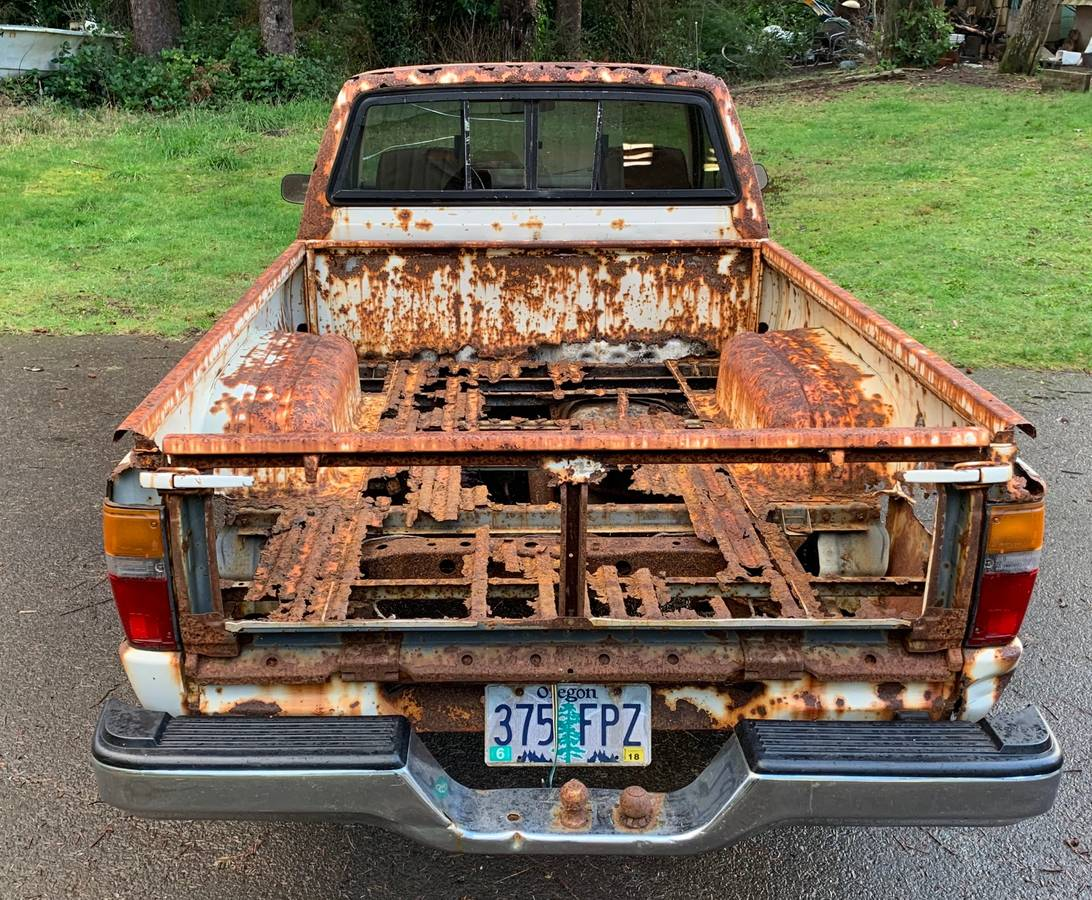

Truck owners love to argue. Gas vs. diesel, short bed vs. long bed, half-ton vs. heavy duty, one we found recently on one of our posts, leave your hitch in or take it out when you're not using it, and in recent years, steel vs. aluminum has joined the list of debates that never seem to end.
Steel dominated for decades, but aluminum has become a serious contender thanks to major moves by automakers. Both sides have strong arguments, and both come with tradeoffs.
For decades, steel was the undisputed king of truck bodies. It was tough, easy to repair, and familiar to everyone from automakers to body shops. That changed in 2015 when Ford launched the first aluminum-bodied F-150. The announcement drew skepticism and jokes, critics called it a “beer can truck”, but Ford’s gamble paid off.
 (well, THATS rad, but not what I meant)
(well, THATS rad, but not what I meant)
By switching to aluminum, Ford shed hundreds of pounds, improved fuel economy, and boosted payload and towing ratings. Today, aluminum isn’t just a novelty. Ford still uses it across the F-150 and Super Duty lines, and competitors like GM and Ram have incorporated aluminum panels and components as well.
The most obvious advantage aluminum offers is weight reduction. A body made from aluminum can trim anywhere from 400 to 700 pounds compared to steel.
That weight savings pays off in multiple ways. Trucks can accelerate and brake more efficiently, fuel economy improves, and payload ratings increase. Lighter bodies also help manufacturers meet federal fuel economy standards without downsizing engines or sacrificing capability.
For everyday drivers, it can mean squeezing a few more miles out of a tank of gas or carrying more gear without exceeding weight limits.
Steel has a long reputation for being tough, and for good reason. It bends before it breaks and handles impacts with a bit more forgiveness than aluminum. Dents in steel are often shallow and spread out, while aluminum can crease sharply under the same kind of hit.
Modern aluminum is much stronger than the thin sheets you’d find in soda cans, but perception matters. Many drivers still feel more confident knowing their truck body is made from steel, especially when thinking about daily wear and tear.
Automakers have countered with stronger aluminum alloys and design improvements, proving that aluminum can hold its own. Still, when it comes to sheer impact resistance, steel continues to have the edge.
Steel and aluminum age very differently. Steel is prone to rust, especially in regions where road salt is common (hi from Minnesota, where its not uncommon for a vehicles drivetrain to ourlast its body). Once rust sets in, it spreads quickly and can ruin panels, frames, and even structural integrity.

Aluminum doesn’t rust in the same way. Instead, it develops a protective oxide layer that helps resist corrosion. That makes aluminum bodies particularly attractive for owners in coastal regions or snowy climates. Trucks can stay looking newer for longer without constant battles against rust.
However, aluminum isn’t completely immune. It can suffer from galvanic corrosion if it comes into contact with other metals without proper insulation. Automakers design around this, but aftermarket modifications or sloppy repairs can introduce problems.
When it comes to fixing damage, steel wins on simplicity and price. Nearly every body shop is equipped to repair steel panels, and the process is straightforward. A dented steel fender can often be hammered out or welded without special equipment.
Aluminum is different. It requires unique tools and training, and not all repair shops are qualified to handle it. As a result, repairs often cost more and take longer. Insurance premiums can reflect this, with aluminum-bodied trucks sometimes carrying slightly higher rates.
The tradeoff is long-term appearance. An aluminum truck that avoids major accidents may look better after ten years than a steel-bodied truck that’s fought rust every winter.
Resale depends heavily on how a truck has been treated, but the body material plays a role too. It keeps coming back to rust. Rust is one of the biggest killers of resale value, and here aluminum shines. A clean, corrosion-free body appeals to buyers and often commands a higher price.
On the flip side, buyers are wary of visible aluminum damage because they know repair costs can be steep. A truck with noticeable dents or creases may fetch less than a steel-bodied equivalent, even if it’s newer or has fewer miles.
Why did automakers push aluminum in the first place? The short answer is regulations. Fuel economy standards required lighter vehicles without sacrificing performance, and aluminum offered an effective solution.
That doesn’t mean steel is going away. Advances in high-strength steel allow automakers to make thinner, lighter panels that are still incredibly strong. Today, many trucks use a blend—steel in the frame and critical components, aluminum for body panels and beds. It’s less about one material replacing the other and more about finding the right balance.
For drivers, the choice between steel and aluminum boils down to priorities:
If you want toughness and easy repairs, steel is the safer bet. It takes hits with more forgiveness and won’t leave you hunting for specialized repair shops.
If you value lighter weight, corrosion resistance, and long-term looks, aluminum makes sense. It holds up against rust and gives you a payload and efficiency edge.
Neither material is flawless, but both have proven reliable in real-world use. Automakers wouldn’t risk reputations or billion-dollar product lines if either one couldn’t stand up to daily life.
The steel vs. aluminum debate doesn’t have a simple winner. Steel still feels tougher in the face of dents and day-to-day abuse, while aluminum resists corrosion and saves significant weight. Repairs are easier and cheaper on steel, but aluminum can offer better resale if it stays clean and undamaged.
Ultimately, the better choice depends less on the material itself and more on how you plan to use your truck. Both steel and aluminum bodies have proven they can handle years of work, weather, and miles. The decision comes down to whether you’d rather deal with rust or higher repair costs, extra weight or sharper creases.
One thing’s certain: the argument isn’t going away anytime soon. Just like gas vs. diesel, truck owners will keep debating steel vs. aluminum for as long as automakers keep building both. And maybe that’s a good thing—it means we’ve got choices, and trucks tough enough to back them up.
Off-Road Basics: What Outdoorsmen Should Know Before Leaving the Pavement
Truck Longevity: Maintenance Habits That Keep Pickups Running